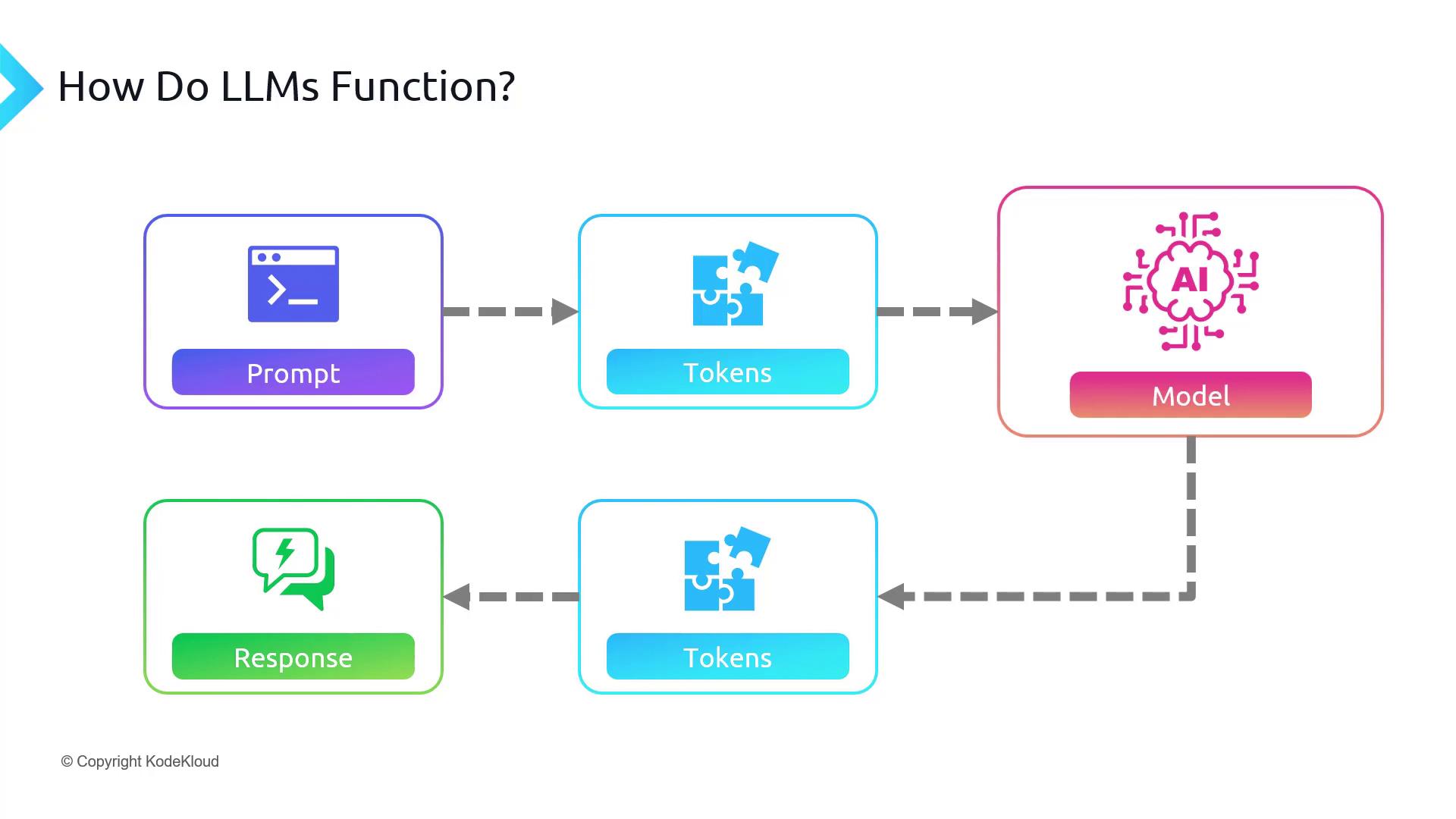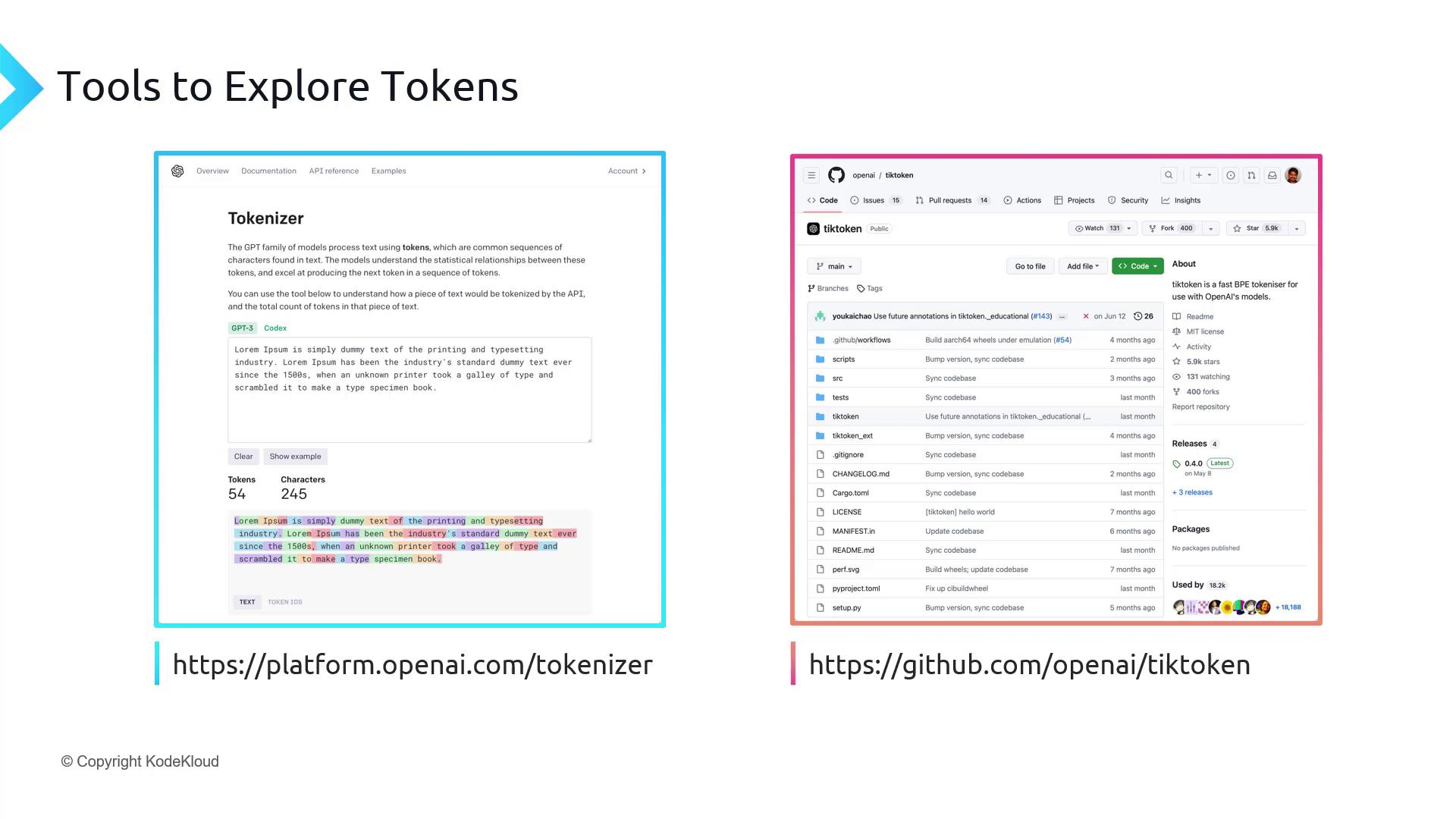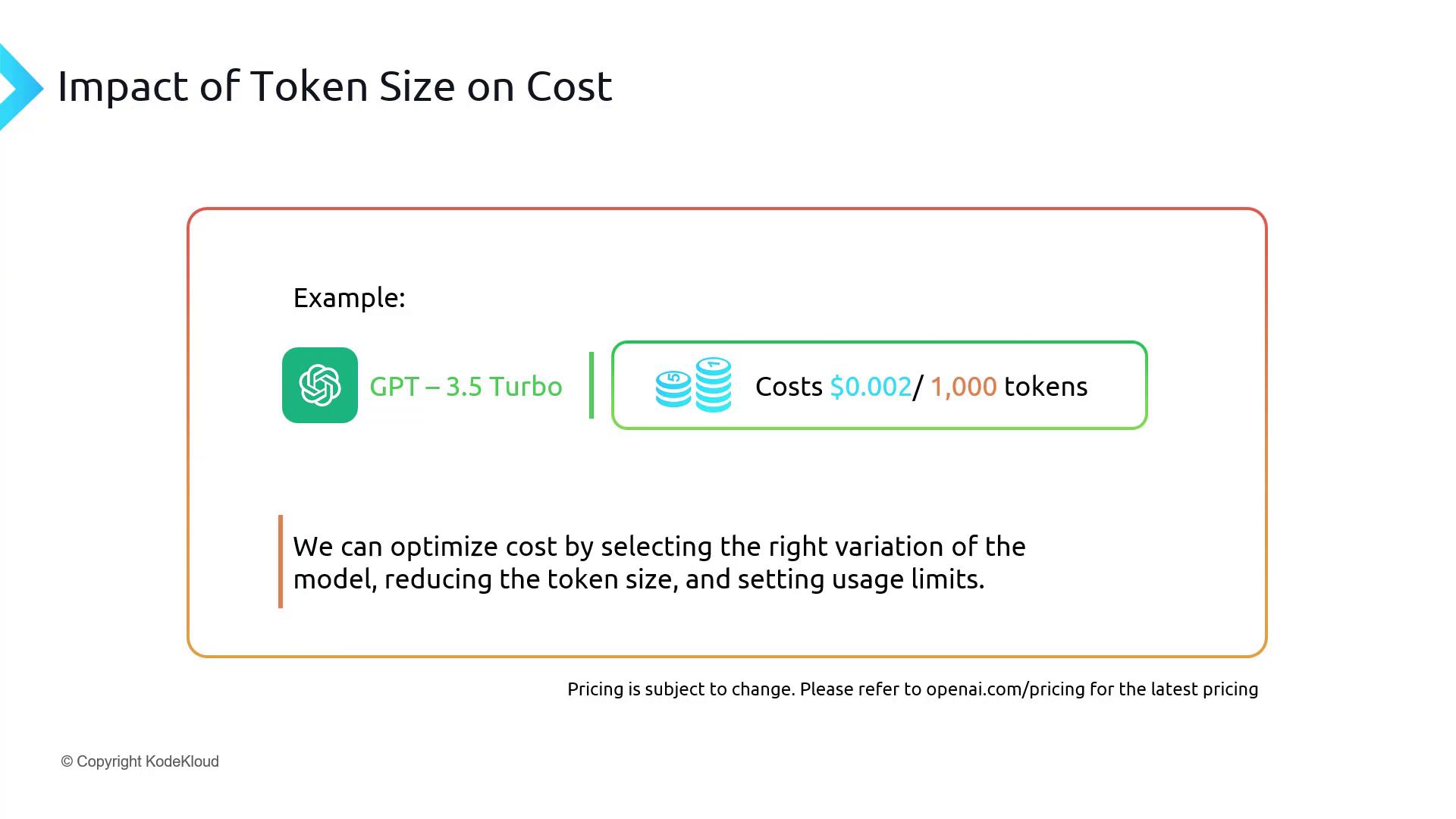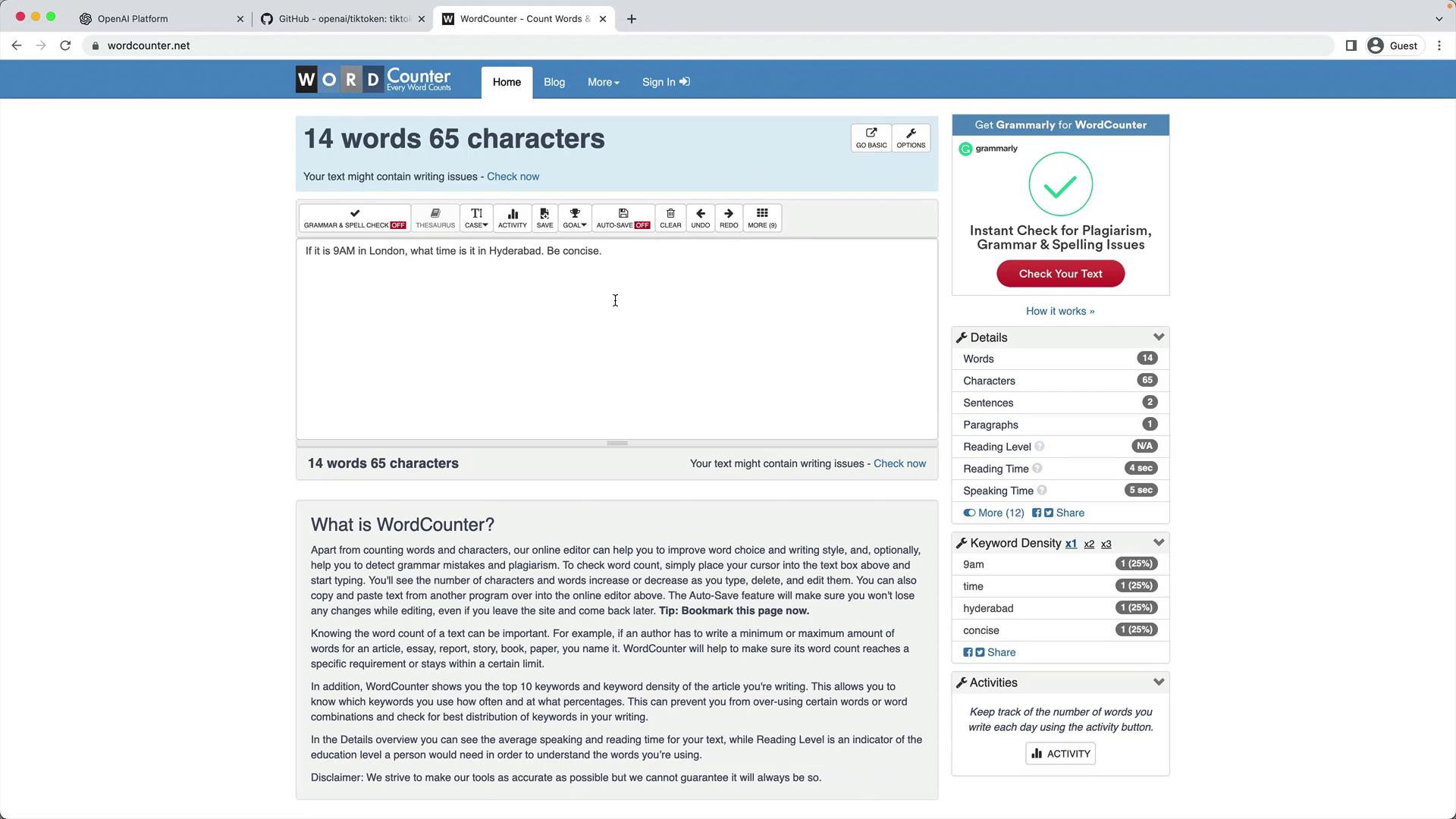Mastering Generative AI with OpenAI
Understanding Tokens and API Parameters
What are Tokens
In this guide, we’ll dive into how large language models (LLMs) like GPT-3 and ChatGPT convert text into numerical units called tokens. Rather than processing words or sentences directly, these models operate on tokens: when you submit a prompt, it’s first transformed into tokens; when the model replies, it generates tokens that are decoded back into human-readable text.

Note
Tokens represent sub-word units rather than full words. Breaking text into these pieces is called tokenization.
Tokenization in OpenAI Models
For OpenAI’s GPT-3 family, one token typically equals about four English characters. In practical terms:
| Metric | Approximate Equivalence |
|---|---|
| 1 token | ~4 characters |
| 100 tokens | ~75 words |
| 2,048 tokens | ~1,500 words |
Note
These are averages—actual token counts vary based on language, punctuation, and formatting.

Tools for Exploring Tokenization
To inspect how your text is split into tokens, try these:
| Tool | Description |
|---|---|
| OpenAI Tokenizer | Interactive web app to visualize token boundaries: https://platform.openai.com/tokenizer |
| Tiktoken | Open-source Python library for encoding/decoding tokens: https://github.com/openai/tiktoken |

Context Length and Token Limits
Every LLM enforces a maximum context length, which is the sum of input and output tokens in a single request. Exceeding this limit triggers errors or truncated responses.
- Current cap for many OpenAI models: 4,097 tokens
- Example: If your prompt consumes 4,000 tokens, you have only 97 tokens left for the model’s answer.
To work with longer conversations, split your text into chunks or feed previous model outputs as new inputs.

Token Cost Impact
OpenAI’s billing is based on tokens processed. For example, GPT-3.5 Turbo is priced at $0.002 per 1,000 tokens (check the latest pricing).
Monitoring token usage helps you:
- Optimize prompt length to fit within context limits
- Manage monthly spending by choosing shorter prompts or more efficient models

Interactive Tokenizer Demo
Try the OpenAI Tokenizer with this prompt:
If it is 9AM in London, what time is it in Hyderabad. Be concise.
- Characters: 65
- Words: 14
- Tokens: 19

You can also inspect the raw token IDs—a vector of integers—for advanced debugging.
Programmatic Tokenization with Tiktoken
Install the library:
pip install tiktoken
Use it in Python:
import tiktoken
# Choose encoding for your model
encoding = tiktoken.encoding_for_model("gpt-3.5-turbo")
prompt = "If it is 9AM in London, what time is it in Hyderabad. Be concise."
# Encode text → list of token IDs
tokens = encoding.encode(prompt)
print(tokens)
# Count tokens
print(len(tokens)) # 19
# Decode back to text
print(encoding.decode(tokens))
# "If it is 9AM in London, what time is it in Hyderabad. Be concise."
Links and References
Watch Video
Watch video content